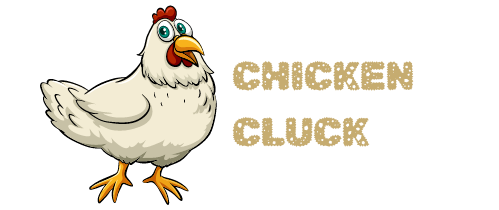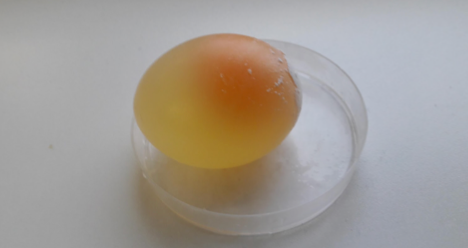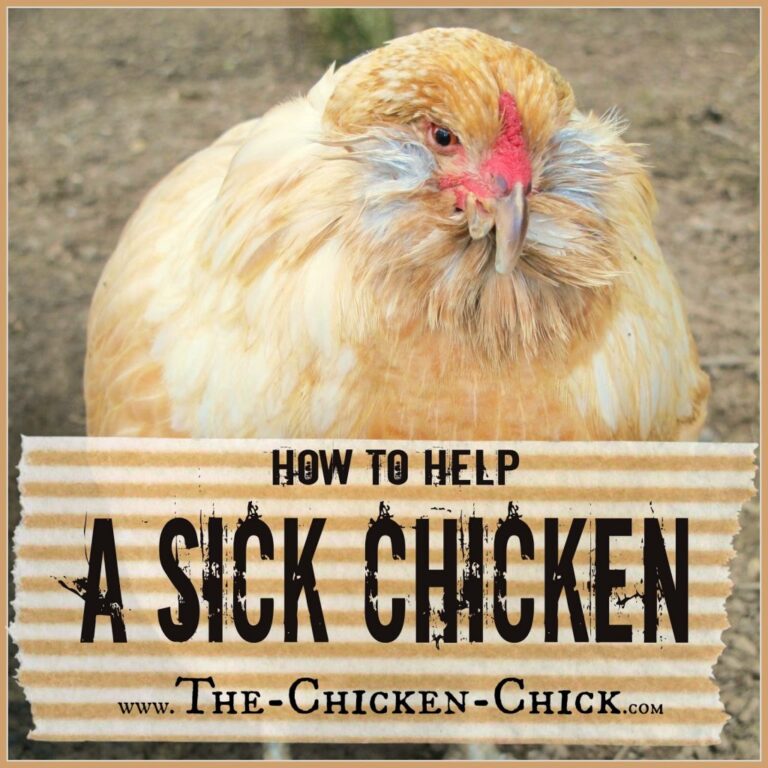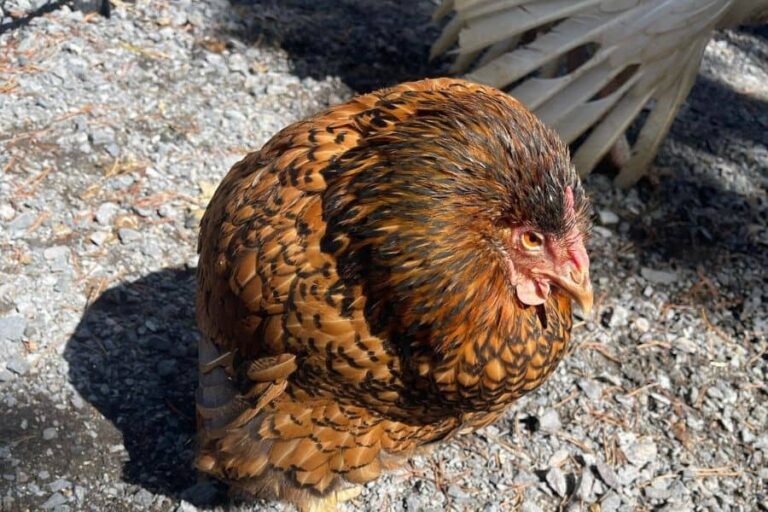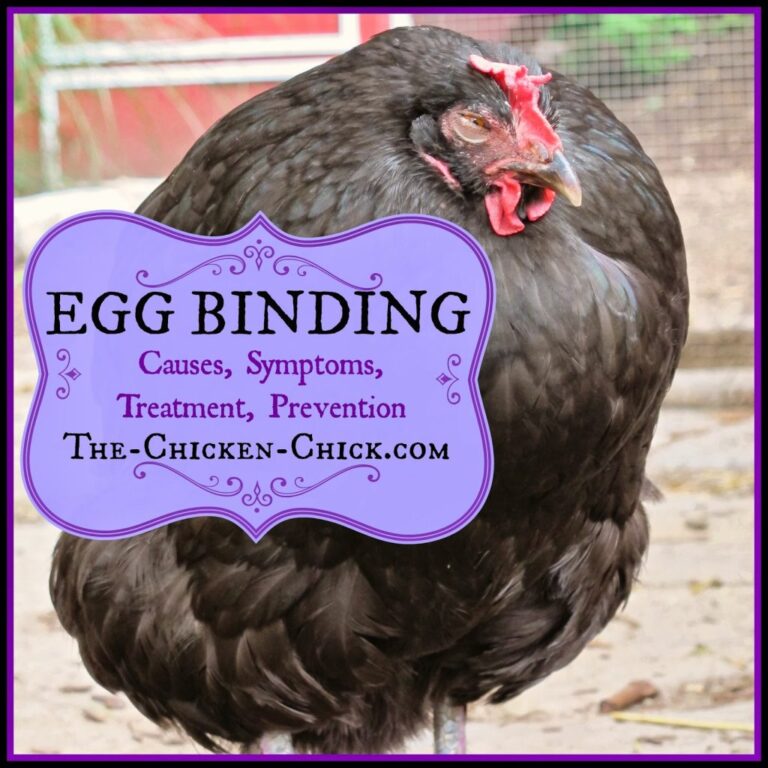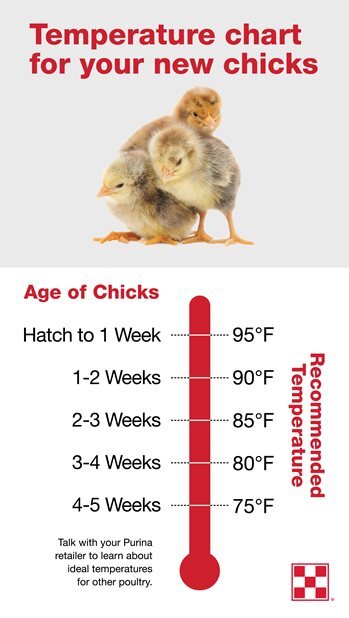Hens may lay eggs without shells due to calcium deficiency or stress. It can also be caused by reproductive tract issues or age.
Understanding why hens lay eggs without shells provides fascinating insights into poultry health. Eggshell formation is a complex process, demanding adequate nutrition and a stress-free environment for hens. Calcium is key, as it’s the primary component of eggshells. Elderly hens or those with reproductive disorders may also face this issue.
Knowing these factors is crucial for poultry farmers aiming to maintain hen health and ensure consistent egg production. Addressing the needs of laying hens can prevent the occurrence of shell-less eggs, which is essential not just for the birds’ well-being but also for the economic sustainability of a poultry operation.

Credit: www.mypetchicken.com
The Basics Of Eggshell Formation
The Basics of Eggshell Formation are crucial to understanding why hens sometimes lay eggs without shells. Eggshells are not just a hen’s whimsy but a complex creation involving biology and chemistry. Let’s crack open the secrets behind the protective layer surrounding the humble egg.
Anatomy Of An Egg
An egg’s beauty lies in its simplicity and its complex structure. The egg comprises several layers each with a role. At the heart is the yolk, rich in nutrients and the life source for a developing chick. Surrounding the yolk is the egg white, or albumen, which cushions and protects. Lastly, the eggshell, hard and porous, acts as a shield against the outside world.
- Vitelline Membrane: Encases the yolk.
- Albumen: Provides protein and water.
- Inner & Outer Membranes: Defend against bacterial invasion.
- Eggshell: Formed mostly of calcium carbonate.
Chemistry Of Eggshell Creation
The journey to a perfect eggshell is a feat of nature’s engineering. It starts in the hen’s reproductive system. Here, the egg gains its various layers, the final being the shell. Calcium and carbonate ions combine in a process that demands precision.
Calcium, the primary ingredient of the shell, comes from the hen’s diet. Without sufficient calcium, shell formation falters. Essential proteins and enzymes also play a role. These ingredients mix and crystallize to form the eggshell matrix. Environmental factors and the hen’s health can disrupt this process, leading to shell-less eggs.
| Element | Role in Eggshell Formation |
|---|---|
| Calcium Carbonate | Builds the shell’s structure. |
| Proteins | Organizes the shell’s architecture. |
| Enzymes | Catalyzes minerals into the shell’s formation. |
| Water | Mobilizes elements into the shell gland. |
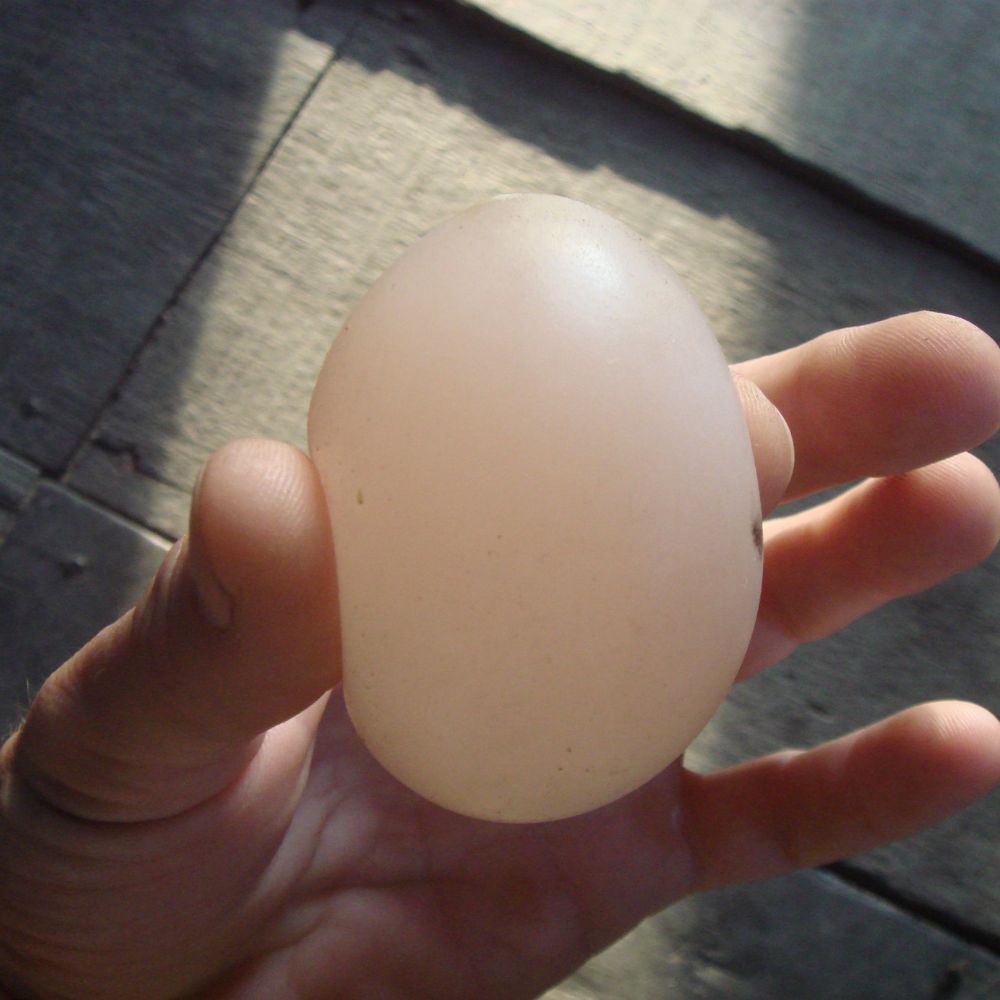
Credit: thefrugalchicken.com
Factors Disrupting Eggshell Formation
When a hen lays an egg without a shell, it’s not just unusual—it hints at a disruption in eggshell formation. These disturbances can stem from various factors that impact a hen’s health and egg-laying capabilities. Let’s explore the primary culprits behind this peculiar phenomenon.
Dietary Deficiencies
Like building a house without bricks, a hen can’t construct a sturdy eggshell without the right materials. Calcium plays a star role in eggshell creation. A lack of calcium leads to weak or nonexistent eggshells. Other nutrients, like vitamin D3 and phosphorus, are also critical. They work alongside calcium to ensure proper shell formation.
- Calcium: Found in oyster shells, limestone, and specially formulated feeds.
- Vitamin D3: Essential for calcium absorption; sourced from sunlight and fortified feeds.
- Phosphorus: Works with calcium; found in grains and protein meals.
Ensuring a balanced diet is key to preventing shell-less eggs. Feed formulated for laying hens typically contains the right mix of these essential nutrients.
Stress And Environmental Changes
A hen’s laying process is sensitive to stress. Sudden changes in light, temperature, or noise levels can unsettle hens. This can lead to disrupted eggshell formation. Stress triggers hormonal imbalances, further affecting egg quality. Even moving to a new location or changes in the flock can be a stress source.
| Type of Stressor | Examples |
|---|---|
| Environmental | Temperature fluctuations, inadequate lighting |
| Physical | Overcrowding, handling by humans |
| Psychological | Pecking among hens, unfamiliar noises |
Minimizing stress is crucial. Consistent care and a stable environment support regular, healthy egg production.
Hens’ Health And Eggshell Quality
The quality of eggshells is a direct reflection of a hen’s health. Shells serve as the sturdy container protecting the egg’s contents, essential for a chick’s development or food safety. When hens lay eggs without shells or with very thin shells, it’s often a clear signal of underlying health issues or nutritional deficits. Investigating health conditions and age can offer insights and remedies to ensure the production of strong, healthy eggs.
Common Ailments In Laying Hens
A range of illnesses can impact eggshell quality:
- Infections or diseases such as egg drop syndrome.
- Parasitic infestations, leading to poor nutrient absorption.
- Reproductive problems that directly affect the egg-forming process.
Ensuring hens receive appropriate medical care and proper management can mitigate these ailments, leading to the recovery of normal shell formation.
Significance Of Hen’s Age
The age of a hen plays a vital role in eggshell creation:
| Hen’s Age | Eggshell Quality |
|---|---|
| Young layers | Sometimes produce shell-less eggs as their systems mature. |
| Prime laying years | Typically produce the strongest and most consistent shells. |
| Older hens | Often experience a decline in shell quality due to aging reproductive systems. |
Understanding these age-related factors helps in managing expectations and adjusting diet or care to aid eggshell quality.
Genetic Influences On Egg Laying
Hens lay eggs, typically with hard shells, but sometimes a hen might produce an egg without a shell. Genetics play a crucial role in this fascinating process. Just like humans, chickens inherit traits from their parents, which can influence not just their feather color or comb shape, but also their egg-laying abilities. Let’s delve into how specific breeds and genetic quirks can affect the eggs we find in the nest.
Breed Specific Egg Characteristics
Different chicken breeds lay distinct types of eggs. Some lay large brown eggs, while others produce small white ones. Certain breeds are known for their high-quality eggshells, thanks to their genetic makeup. Here’s a quick look at breed-specific egg traits:
- Rhode Island Reds – Known for large, brown eggs.
- Leghorns – Produce plentiful white eggs.
- Araucanas – Lay unique blue-green eggs.
Genetic Anomalies And Eggs
Sometimes a genetic hiccup can lead to eggs without shells. These anomalies can disrupt the normal egg formation process. For instance, the hen’s body might skip depositing the calcium layer around the egg, resulting in a shell-less egg. Factors like stress, diet, and health can also affect this, but genetics are often at the core. Take a peek at some genetic factors that might cause shell-less eggs:
| Genetic Factor | Impact on Egg |
|---|---|
| Ovary Function | Proper shell formation |
| Calcium Metabolism | Strength of eggshell |
| Hormonal Balance | Egg production regularity |
Understanding the genetics behind egg-laying can help poultry enthusiasts select the best breeds for their needs and address any concerns with shell-less eggs.
Nutrition’s Role In Egg Production
Nutrition plays a pivotal role in egg production among hens. Just like building a house needs bricks, laying a strong and healthy eggshell requires specific nutrients. Without the right dietary building blocks, hens might yield eggs sans the protective shells—a spectacle that can cause quite the stir in the coop!
Essential Nutrients For Shell Formation
A hen’s diet requires balance for the best eggshell outcomes. Certain elements stand out in their importance:
- Calcium: Vital for strong shell development
- Phosphorus: Works with calcium for shell integrity
- Vitamin D3: Helps hens absorb calcium
- Magnesium: Aids in forming the egg’s shape
To visualize how these nutrients impact shell formation, consider this:
| Nutrient | Role in Eggshell Formation |
|---|---|
| Calcium | Main component of the shell |
| Phosphorus | Assists calcium with shell structure |
| Vitamin D3 | Boosts calcium uptake |
| Magnesium | Contributes to structural stability |
Supplements To Enhance Egg Quality
Even with a balanced diet, hens often need an extra boost. Here’s what farmers give to their flock for top-notch eggs:
- Oyster shell supplements provide extra calcium.
- Vitamin D3 fortified feed improves calcium absorption.
- Grit with minerals helps hens digest their food better.
Remember, consistent quality feeds and supplements ensure the health of your hens and the quality of their eggs. Compliance with these nutritional guidelines can mean few to no eggs laid without shells, paving the way for happy hens and happy farmers alike.

Credit: khpet.com
Impact Of Stress On Laying Hens
Imagine a hen as a fragile clockwork, beautifully tuned to lay perfectly shelled eggs. Stress is like a wrench in the gears, disrupting her delicate system. The shells may vanish, leaving only soft or shell-less eggs. This curious phenomenon raises questions about the underlying causes.
The Physiology Of Stress In Birds
Stress triggers a flood of hormones in hens. Cortisol surges, and the normal balance tips. Calcium, pivotal for egg formation, redirects from shells to other vital functions. As a result, the shell’s loss reflects a hen’s fight for stability amid stress.
- Adrenal glands pump stress hormones.
- Calcium sources redirect away from eggshells.
- Eggshell glands receive less calcium.
- Production of shell-less eggs becomes a survival reaction.
Alleviating Stress For Optimal Egg Health
Creating a haven for hens is key to combat stress. Here are streamlined strategies to ensure your hens remain calm and productive:
| Strategy | Benefits |
|---|---|
| Stable routines | Minimizes surprises, induces calmness |
| Comfortable coops | Shields against predators, incites relaxation |
| Nutritious diets | Provides necessary nutrients, fosters health |
| Ample space | Encourages natural behavior, decreases tension |
By weaving these patterns into the hens’ environment, farmers can see fewer shell-less eggs and happier birds.
Human Interventions And Shell-less Eggs
Human Interventions and Shell-less Eggs: Sometimes, hens lay eggs without shells. This might seem surprising, but various human interventions can cause this unusual occurrence. From farming practices to technological innovations, humans have a significant impact on the egg-laying process of hens. Understanding these interventions can help prevent shell-less eggs, ensuring the health of hens and the safety of their eggs.
Effects Of Farming Practices
Farming practices often influence a hen’s ability to produce healthy eggs with strong shells. Factors that can lead to the production of shell-less eggs include:
- Nutrition: Hens need calcium to make eggshells.
- Stress: Noisy or crowded farms can scare hens.
- Age: Young and old hens can lay eggs with thin shells or no shells.
- Light exposure: Hens need sunlight for healthy egg-laying.
Lack of these can result in weaker eggs or even eggs without shells. Farmers must monitor hen diets, environments, and general health closely.
Technological Solutions For Egg Protection
Technology steps in to help protect eggs from damage. These solutions include:
- Calcium supplements: These ensure hens get enough nutrients.
- Environment control systems: They keep hens comfortable.
- Automated egg collectors: These reduce the chances of egg cracking.
By using modern technology, farmers can create a more consistent and safe egg-laying process, which reduces the likelihood of shell-less eggs being laid.
Preventive Measures And Best Practices
Welcome to the crucial segment on ‘Preventive Measures and Best Practices’. Hens can lay eggs without shells for several reasons. Let’s explore key steps to prevent this peculiar issue and ensure the health and productivity of your laying hens.
Optimizing Living Conditions
Creating a stress-free environment is vital for hens to lay healthy eggs. Proper lighting, temperature, and space matter a lot. Hens need enough room to move, perch, and rest. Keep predators away to make them feel safe. Here’s what you can do:
- Space: Provide at least 2 square feet per bird inside the coop.
- Light: Ensure they receive 14-16 hours of light daily.
- Temperature: Maintain a steady temperature between 18-23°C (65-75°F).
- Feeding: Give them calcium-rich diet with proper feeder space.
Regular Health Check-ups For Laying Hens
Just like humans, hens require regular health monitoring. Parasite control and vaccination are key. A vet can identify issues early, like calcium deficiencies, that cause shell-less eggs. Follow a health plan:
- Perform monthly checks for lice, mites, and other parasites.
- Schedule biannual visits from a poultry vet.
- Monitor daily for signs of distress or illness.
- Ensure access to clean, fresh water at all times.
Incorporating these measures and practices will lead to happier, healthier hens. Healthy hens are more likely to lay perfectly shelled eggs. Stay tuned to your hens’ needs and they will surely thrive.
Conclusion
Understanding the factors behind shell-less egg production in hens is vital for poultry health. Diet, age, and stress play crucial roles. Address these, and you boost your flock’s well-being. For detailed insights and prevention tips, revisit our practical suggestions outlined earlier.
Healthy hens, happy farmers!
